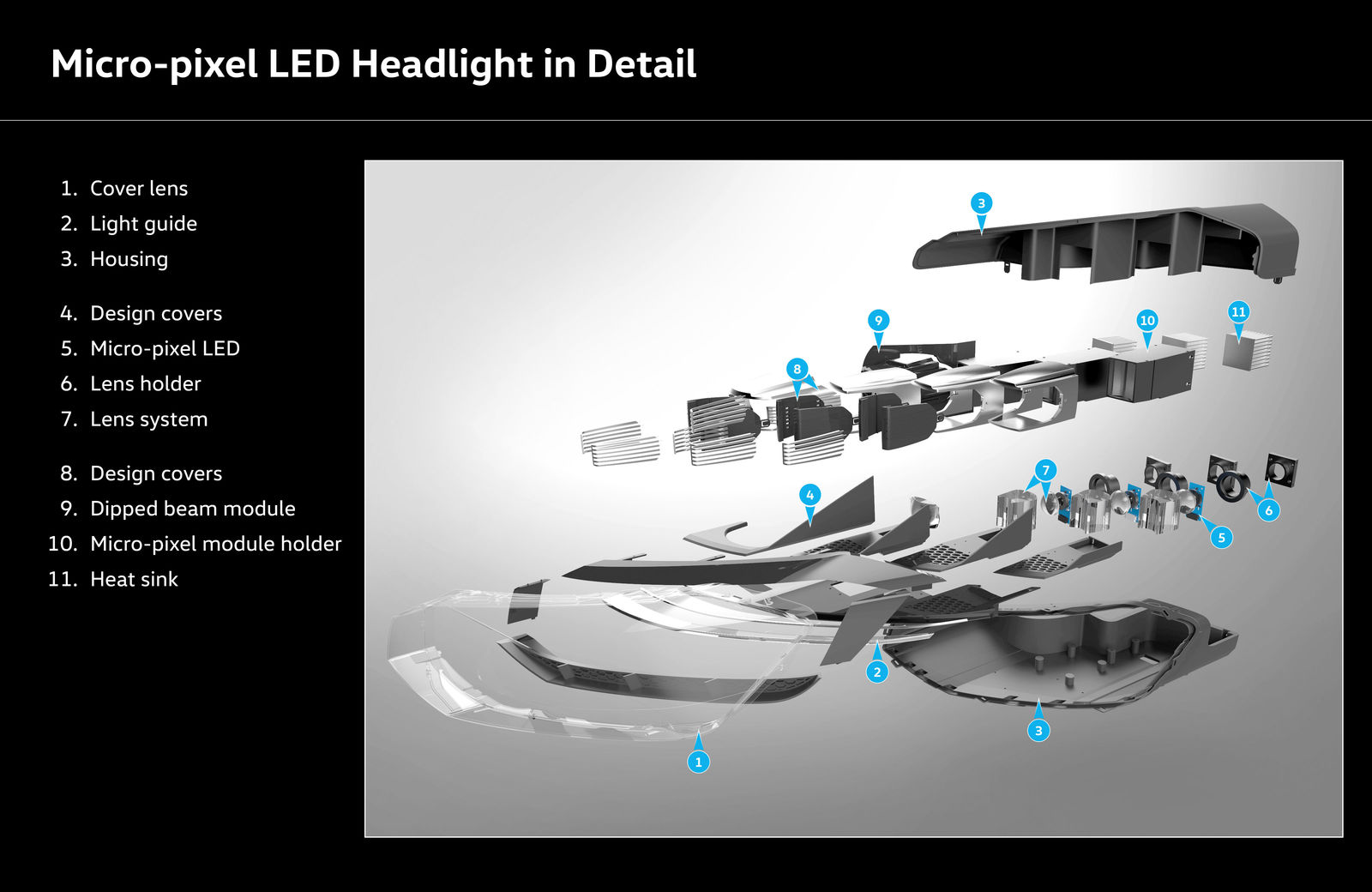Micro-pixel LED headlight
Another exceptionally interesting HD technology is the micro-pixel LED headlight. Volkswagen is currently working on the predevelopment of this type of system. The micro-pixel LED headlight is a compact, energy-efficient and high-resolution lighting system that offers a maximum range of functions. The headlight technology enables light control that is individually adapted to the respective driving situation, interactive light projections onto the road and a high degree of individualisation. Volkswagen will also use a future end-to-end electronics architecture and a new operating system to ensure that new functions can be loaded as upgrades via an app.
Three chips, each with 1,024 pixels as the technological basis
The technological basis of the micro-pixel LED headlight is formed by three micro-pixel LED chips. At the centre of these chips, 1,024 pixels are arranged on an area of only 4 x 4 mm. Each of these 3,072 pixels can be controlled individually. As shown, each individual micro-pixel LED chip is square, with an area of 16 mm2. If this latest chip were displayed 1:1 using a projection system, the projection would also be a square. The light distribution in front of a vehicle, however, is typically rectangular for reasons of driving dynamics. By skilful projection, the optical system thus transforms the square light distribution of the source into an ideal aspect ratio of 3:1. This means that the entire basic light can be covered with a matrix and is available for the application of intelligent lighting functions. In the future, rectangular micro-pixel LEDs could simplify the design of the optical system.
Up to 30,000 pixels can be realised with this system
The entire headlight consists of a large LED light module for static surround lighting and the three outer lenses. These three lenses contain the know-how with which a completely new, powerful and interactive generation of headlights can be launched. The three micro-pixel lenses operate as projection modules. Volkswagen has developed an optical system that doubles the horizontal axis of the overall light distribution. The lighting engineers developed a rectangle in a ratio of 2:1 from a square. And this creates more width in the light distribution. These three rectangles in turn overlap. This is the only way to create a maximum width of field and the largest possible angle range in which all conceivable lighting functions can be implemented. Since the chips also project into the same area, more pixels and thus a higher resolution are available, which in turn can be used to implement more functions. The 3,072 pixels realised now are a start – micro-pixel LED headlights have the technical potential to include and project up to 30,000 pixels per chip. The economical micro-pixel LED headlights would thus achieve the same resolution as the less energy-efficient HD-LCD headlights.
